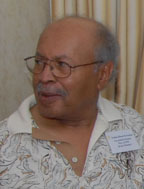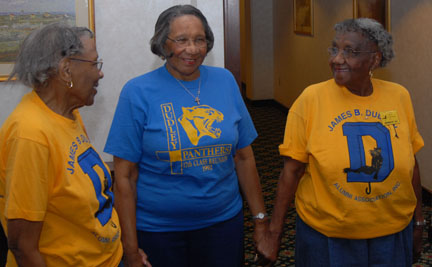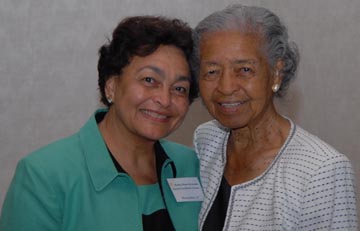

|
|||||||||||||
Curator’s Statement |
|||||||||||||
Nor will I ever forget my 2007 visit to the 32nd Annual Consolidated Class Reunion of Dudley High School, a weekend that was powerful, a bit perplexing and unnerving, and ultimately quite gratifying. I was not the first “outsider” to appear at their gatherings and, thus, was met with some skepticism, appropriately, but also with much kindness and graciousness. What I suspect may have caused some distinctiveness to my research visit was the fact that my questions where focused on specific teachers and classroom experiences from the 1940s. The topic of civil rights and social injustices would arise - - quite quickly as was the case with my conversation with the class of 1952 - - but my purpose was not just to document and restate race inequities but, instead, to attempt to ascertain the many reasons that caused Dudley High School to be such an outstanding educational and cultural institution. |
|||||||||||||
|
|||||||||||||
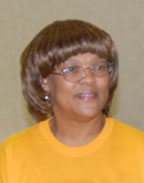 with great thanks to Brenda Dalton James |
|||||||||||||
|
|||||||||||||
Many other memories come to the forefront from that weekend of long ago. My conversations with James W. Carter, a thoughtful and knowledgeable professional educator, convinced me that my research on the Secondary School Study could become important. I thank him for organizing my attendance at the class of 1952’s meeting. And, the Clark sisters - - - witnessing their keen intellect and good cheer among the three; this reminded me of the importance of arranging on-site visits. But among the many research interviews that I have conducted during the past three years (with over 180 interviewees), I will never forget sitting in that noisy kitchen corridor with the elegant, graceful Miss Jenkins as she asked me why - - why didn’t schools continue to use an integrated or correlated core as the defining configuration for the secondary school curriculum. Sitting teary-eyed, then and now, I realized that today's educators all have so much to learn from the teachers of the Secondary School Study. |
|||||||||||||
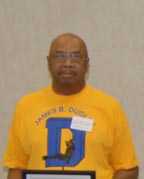 James W. Carter |
|||||||||||||
|
“I so enjoyed teaching at Dudley High School. It was not laying down the law; we would get together with other teachers and work together. There was a vision and this became a shared vision.” |
||||||||||||
with great thanks to those of Dudley High School, Craig Kridel |
|||||||||||||

an institutional member of the International Coalition of Sites of Conscience
Museumofed@gmail.com

